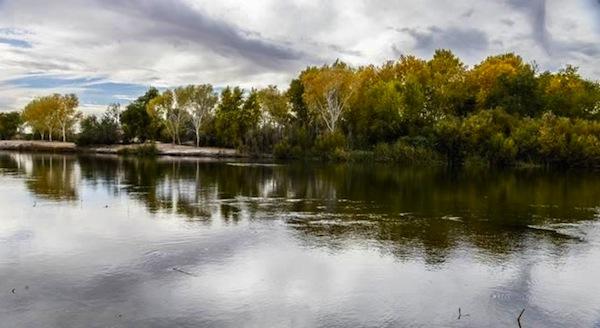Saving America's Nile: How the Quechan Are Rehabbing the Colorado River

Courtesy of Yuma Crossing National Heritage Area Corporation
The Colorado River, once home to riverboats and a source of liquid sustenance to many, has been referred to as America’s Nile, the most important river in the Southwest. Until recently a section of the lower Colorado with the city of Yuma on one side and the Quechan Indian tribe on the other was a no- man’s land. It would still be that way if not for the cooperative efforts of the Yuma Crossing National Heritage Area.
Where the riverbanks were once home to thickets of 20-foot-tall non-native vegetation that hid trash dumps, hobo camps and meth labs, now can be found an oasis, a connection to the river via the Yuma Wetlands project.
“The National Heritage Area has brought tribal authorities, government agencies, local businesses and farmers together in a way that similar sites around the country could learn from,” said Arizona Rep. Raul Grijalva, D-3rd District. “It’s a nonpartisan way to keep a good thing going.”
“It’s amazing we’ve all gotten along so well for over a decade,” said Brian Golding, Quechan Tribal Economic Development Director and one of the key project partners in which the tribe is principle landowner, along with the City of Yuma, the Bureau of Reclamation, the Arizona Game & Fish Department and some private landholders. To date, more than a third of the 1,200 acres involved has been restored, to the delight of the tribe.
“We have a strong religious and cultural connection to the water, and due to all the nefarious activities that were going on, we became disconnected from something we drew power from,” said Golding. “That’s one of the reasons the tribe got involved in this restoration and, in the process, became the first tribe to have entered into one of these agreements with the multi-species conservation plan for the lower Colorado River. That’s a significant first.”
Also significant is the funding allocation—a yearly Congressional appropriation of $350,000 for the next 50 years, as well as a $50,000 tribal contribution for restoration and upkeep activities.
“Returning some balance to the river is ambitious, positive and fun,” Golding said, adding that development of a Quechan Riverfront Park is on the drawing board.
“When I first got here, there was a literally impenetrable quarter mile of thick vegetation allowing no river access,” said Charles Flynn, executive director of the rehab project. “It took three years of planning and consensus building before we got a half million dollar grant that was immediately put to use cleaning up the first 100 acres of riverbank. We pulled out the jungle of salt cedars and planted native grasses as an understory.”
Early on, what is now a model for wetlands restoration in the desert southwest was questionable, with success coming in the face of significant obstacles.
“From a technical standpoint, the high soil salinity and reduced river flows made experts question the project’s viability,” the Yuma Crossing National Heritage website points out. Now that more than 330,000 cubic yards of dirt have been moved and a quarter of a million trees, plants and grasses have taken hold under the restoration effort, the focus has shifted. The current main concern is keeping the area restored through the Lower Colorado River Multi-Species Conservation Program, supported by the Quechan Indian Tribe and the City of Yuma.
Adding to that, the Quechan are working on a companion riverfront park on their side of the waterway to be built with their own culture represented.
“Sometimes Mother Nature needs a little help,” said Golding. “While we wanted to take care of our land, water, plants, and animals, we also foresaw potential economic benefit by increasing access to the river for recreation, ecotourism, fishing and water sports.”
Success of the efforts is seen in the popularity of growing public participation as well as the fact that bird populations have increased by 75 percent.
“We’ve seen a return of the river by clearing out the undesired elements and restoring them with any number of native species, planting willows, cottonwood, mesquite, and ironwood,” said Golding. “And we don’t just hire a contractor to come in and do the planting. We work with Native preference, and some of our own people with their own companies get involved as subcontractors.”
Tribal involvement of the Yuman peoples has been intimate, ongoing and is constantly expanding.
“To give a sense of the hunger for a tribal reconnection to the river, the West Wetlands used to be the city dump; it looked like a crater on the moon,” said Flynn. “But with landscaping done, we had almost a thousand volunteers for the Millenium Tree Growth planting—700 trees went in the ground in an hour. That was the point where Yumans said, ‘Now we really do have access to the river.’ ”
Read more at http://indiancountrytodaymedianetwork.com/2014/05/16/tribal-transformation-quechan-help-bring-lower-colorado-river-habitat-back-life-154899